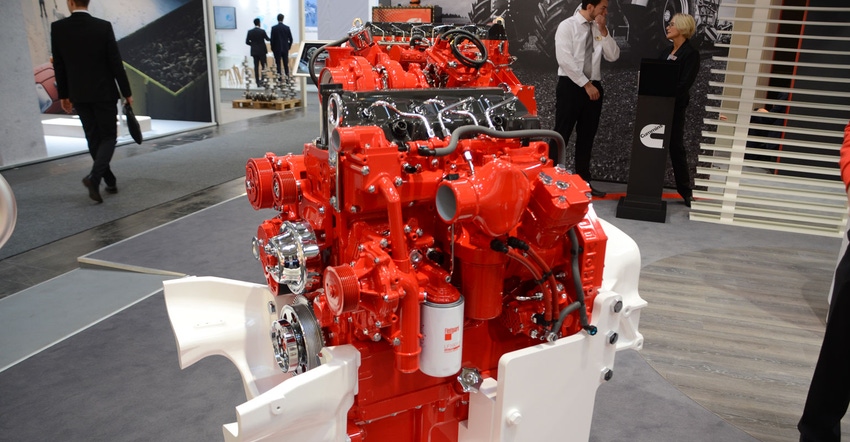December 18, 2020

It’s easy to get caught up in the carbon-reduction conversation, and major engine companies are looking at a range of technologies. But for farmers who turn to diesel power every day, the near-term news is that you won’t be changing power sources any time soon.
Recently, Farm Progress caught up with Ann Schmelzer, general manager, global ag business, Cummins, to talk emissions, engines and what she’s seeing in the global market. “I’m still working and very focused on global emissions, and the different standards that need to be met as things are changing,” she says.
Around the world, different countries have different emission standards, and to be competitive in each of those markets, engine makers build to local standards. Europe has initiated what it calls Stage 5 standards, which are more stringent than U.S. final Tier 4 emission levels. “Actually, we’re selling those [Stage 5] engines in North America as well,” she says.
Engine makers don’t sell directly to farmers. Equipment makers work with engine manufacturers on selecting power plants for the right job. But in 2019, Cummins rolled out its new Performance Series engines, which have global emissions compliance capability. “They are popular just in terms of simplicity of design and the extra power they provide, and not having EGR [exhaust gas recirculation],” she says.
The engine industry has undergone significant change since 1999, as the phased-in emission standards came into effect. Schmelzer notes that this development process has also turned out better engines.
"We've learned so much over the past 20 years about off-highway engine performance — but particularly at Tier 4 final and Stage 5,” she says. Schmelzer notes that the company benefits from its on-highway program, powering big rigs over the road. This allows the company to fine-tune specific technologies for emissions and performance.
“We’ve seen significant increases in power density and durability with the Performance Series, alongside near-zero emissions,” she adds.
Cummins’ role in agriculture has changed over the years as major equipment makers, and their owners, have made changes. Yet Schmelzer notes that Cummins “has a long and storied history in agriculture, and I like to tell folks that our very first engine was for a water pump in California. And when people say Cummins doesn’t have a big ag presence, I want to jump up and down on tables and say, ‘We’ve been here.’”
A more recent development for Cummins has been its “structural” product range, which means the engine is used as the load-bearing part of the tractor rather than a chassis frame. Those engines — the F3.8 and F4.5 Performance Series — range from 90 to 200 hp. The structural oil pan and cylinder block provide optimal strength when placed in a machine. The engines also feature high power density for tractors needing higher-speed power delivery. These engines can even be equipped with start-stop technology for greater efficiency.
Ag and autonomy
She explains that agriculture is a significant growth initiative for the company. Already, Cummins plays a role in irrigation power and standby generators used in several applications. And the company is playing a role in autonomous equipment.
“We’re looking to the future with new technologies like autonomous tractors,” Schmelzer says, noting the company’s engine powers the autonomous Dot power platform from Raven Autonomy. The company also powers the GUSS (global unmanned spray system) autonomous orchard sprayer.
Schmelzer says that autonomous equipment makers are turning to Cummins because the company offers engineering integration, but also service and support. “Some of these OEMs [original equipment manufacturers] are doing these really unique installations — and they’re focused on the rest of the machine, which is obviously incredibly technologically advanced, and they don't want to think about the engine too much,” she adds.
Beyond diesel
While diesel engines continue to meet power needs for a range of uses both on- and off-highway, Cummins isn’t standing still. The company is also looking at opportunities in alternative technologies like electric, hybrid and hydrogen fuel-cell power. But don’t look for those systems on-farm anytime soon. The early development is focused more with on-road businesses, because states are implementing new rules.
Schmelzer adds: “The Cummins objective is to be the powertrain provider of choice, whatever that choice is.” You can learn more about current products and new developments with electric and fuel-cell power by visiting cummins.com.
About the Author(s)
You May Also Like






